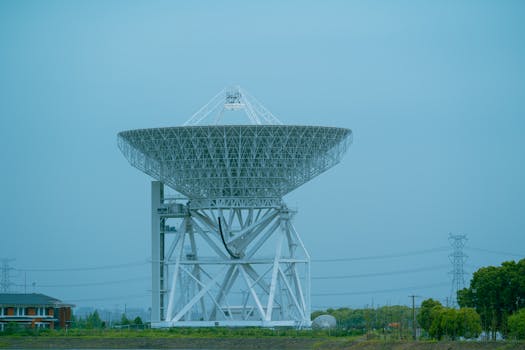Orbiting Innovations: Key Updates in Satellite Telecommunications Technology
The latest advancements in satellite telecommunications technology are transforming the way we communicate and access information. This article explores the key updates and innovations in the field, including the development of new satellite constellations, advanced propulsion systems, and improved data transmission capabilities.

Orbiting Innovations: Key Updates in Satellite Telecommunications Technology
Orbiting Innovations: Key Updates in Satellite Telecommunications Technology has been a rapidly evolving field in recent years, with significant advancements in satellite design, launch technology, and data transmission capabilities. The development of new satellite constellations, such as those launched by SpaceX and OneWeb, has increased the availability of satellite-based internet services and improved connectivity for remote and underserved communities.
Satellite telecommunications technology has come a long way since the launch of the first commercial communications satellite, Intelsat 1, in 1965. Today, satellites play a critical role in modern telecommunications, providing a range of services including television broadcasting, mobile communications, and internet connectivity. The use of satellites in telecommunications has several advantages, including global coverage, high bandwidth, and resilience to natural disasters and network outages.
Advances in Satellite Technology
Recent advances in satellite technology have focused on improving the efficiency, capacity, and flexibility of satellite systems. One key area of development has been the use of advanced propulsion systems, such as electric propulsion and hall effect thrusters, which enable satellites to maintain their position and altitude more efficiently. This has led to significant reductions in fuel consumption and extended the lifespan of satellites.
Another area of innovation has been the development of new satellite constellations, such as the Starlink constellation launched by SpaceX. These constellations consist of hundreds or thousands of small satellites that work together to provide global coverage and high-speed internet connectivity. The use of small satellites has reduced the cost and complexity of satellite launches, making it more accessible to a wider range of organizations and individuals.
Improving Data Transmission Capabilities
Improving data transmission capabilities has been a major focus of research and development in satellite telecommunications technology. The use of advanced modulation techniques, such as quadrature amplitude modulation (QAM) and orthogonal frequency-division multiplexing (OFDM), has enabled satellites to transmit data at higher speeds and with greater efficiency. The development of new antenna technologies, such as phased arrays and reflectarrays, has also improved the performance and flexibility of satellite communication systems.
The use of satellite-based internet services has become increasingly popular in recent years, particularly in remote and underserved communities where access to traditional telecommunications infrastructure is limited. Satellite-based internet services offer a range of benefits, including global coverage, high bandwidth, and low latency. However, they also face challenges such as high costs, limited availability, and interference from other satellite systems.
Future Directions and Challenges
Despite the significant advances in satellite telecommunications technology, there are still several challenges and limitations that need to be addressed. One major challenge is the increasing congestion in the radio frequency spectrum, which is essential for satellite communications. The development of new satellite constellations and the growing demand for satellite-based services have put a strain on the available spectrum, leading to concerns about interference and reduced performance.
Another challenge is the need for more efficient and sustainable satellite systems. The use of satellites has a significant environmental impact, including the production of space debris and the consumption of resources. The development of more efficient propulsion systems and the use of sustainable materials in satellite design are essential for reducing the environmental impact of satellite telecommunications technology.
In conclusion, the latest advancements in satellite telecommunications technology are transforming the way we communicate and access information. The development of new satellite constellations, advanced propulsion systems, and improved data transmission capabilities has increased the availability and performance of satellite-based services. However, there are still several challenges and limitations that need to be addressed, including the need for more efficient and sustainable satellite systems and the increasing congestion in the radio frequency spectrum.



